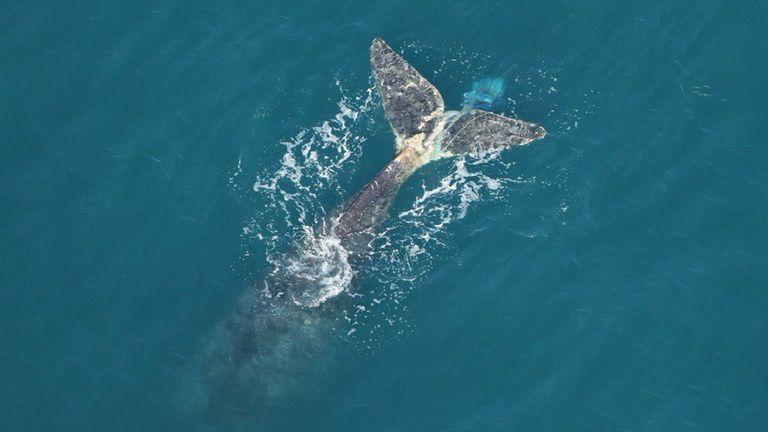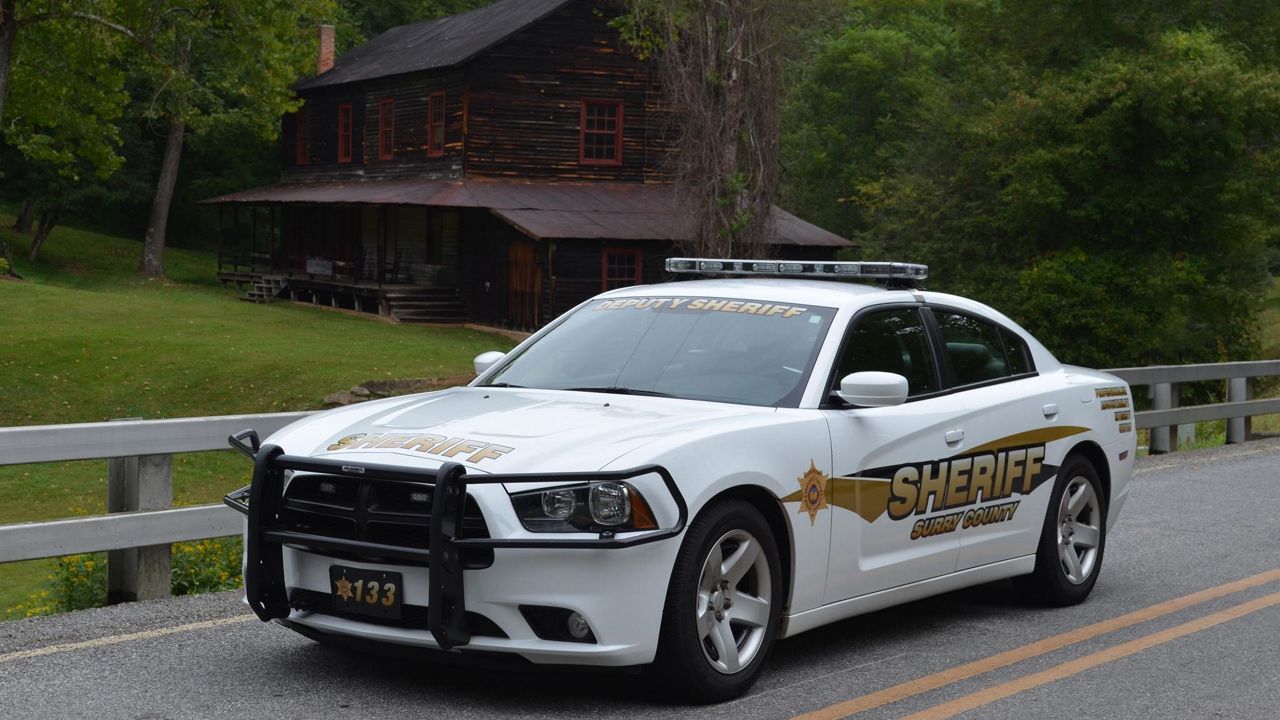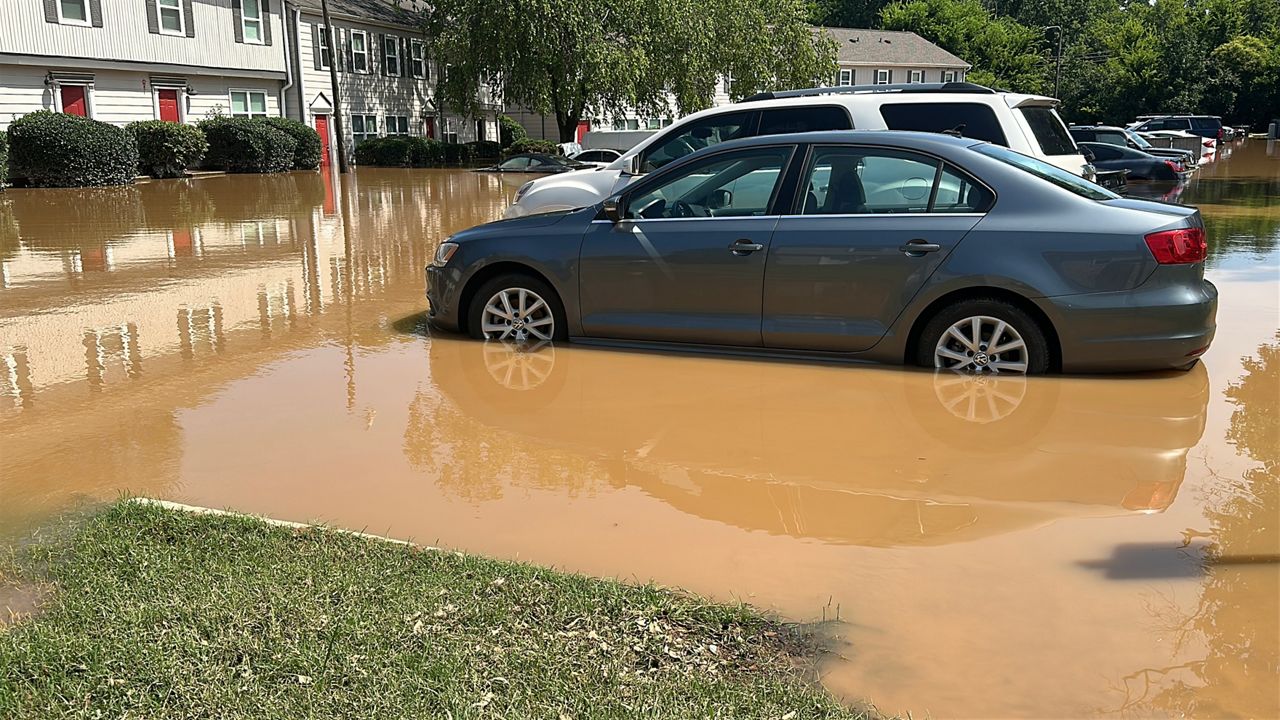TOPSAIL ISLAND, N.C. — Researchers in a small inflatable boat got as close as they could to a North Atlantic right whale. They could see rope wrapped around his tail. They tried to use a knife on a long pole to cut away the rope, but the angle was wrong, the researchers said. They were about 23 miles off the coast of North Carolina.
The crew was directly behind the whale, called Catalog #1218 and more commonly known as “Argo.” The massive adult male, about the size of a bus, moved back and forth in what they called “evasive maneuvers.” They switched to a “flying knife” attached to a buoy, trying once again to liberate Argo from the rope and two lobster pots.
“Over a tense period of about 20 minutes, all in close contact with the whale, the crew makes at least six cuts in the wraps of rope. A final cut is made, slicing into a loose loop of rope around the left fluke,” according to the Georgia Department of Natural Resources.
“Once the ropes were cut, the tissue surrounding the rope continued to hold the gear in place. Responders backed-off but kept hold of the rope trailing behind the whale. While they readied additional disentanglement options, the ropes and traps came loose and fell away from the whale,” said the Florida Fish and Wildlife Commission, which helped with the dramatic rescue.
North Atlantic right whales are one of the most endangered large whale species, according to the National Oceanic and Atmospheric Administration. Researchers estimate there are less than 350 North Atlantic right whales left in the world.
Conservation workers first learned Argo was in trouble on Jan. 27, when he was spotted by a survey plane from the Clearwater Marine Aquarium Research Institute. A crew from the Duke University Marine Lab got out on the water that day and found Argo, according to Georgia DNR. Argo was moving slowly, about 1 to 2 knots, and appeared to only be using his fins, not his tail to swim south.
The whale was clearly in a lot of trouble. This kind of entanglement with fishing gear could mean death for Argo.
Researchers caught up with the whale again the next day about 27 miles to the south, off Carolina Beach. Using a drone above and an underwater camera below, the researchers examined the ropes and traps to come up with a plan to free Argo. They attached a tracking buoy to keep tabs on Argo as they figured out their next step, Georgia DNR said.
On the third day of the rescue effort, Jan. 29, Argo had continued south to about 25 miles south of Cape Fear. The researchers had three boats on the scene, including the rubber “combat boat” to get up close for the operation.
They started working to cut the ropes when they reached Argo at 10 a.m. The first efforts with the knife attached to a long pole didn't work, but the “flying knife” managed to cut through the thick fishing ropes.
“Argo is moving slower and spending more time at or near the surface. After the last cut, the crew in the inflatable boat falls back while still holding the buoy line, which is attached to the lobster pots,” said the Georgia DNR.
“Argo slowly swims forward. At 12:22 p.m., the rope goes slack and the pots sink to the sea floor. The whale is free,” the researchers said.
It was a collaborative effort to free Argo, including researchers from Florida Fish and Wildlife, Georgia DNR, Duke University and others, along with air support from NOAA and the U.S. Army Corps of Engineers.
NOAA and Canadian regulators investigated, and found that the lobster gear came from a fishing area off Nova Scotia, about 800 miles from where it was taken off Argo, according to Florida Fish and Wildlife researchers.
“Entanglement in commercial fishing rope – like that used in lobster, snow crab and other fixed-gear fisheries – is the leading threat to North Atlantic right whales,” according to Georgia DNR.
“Argo isn’t out of the woods, of course. Given his injuries, he may not survive. But at least now he has a chance,” the department said.






_Cropped)


